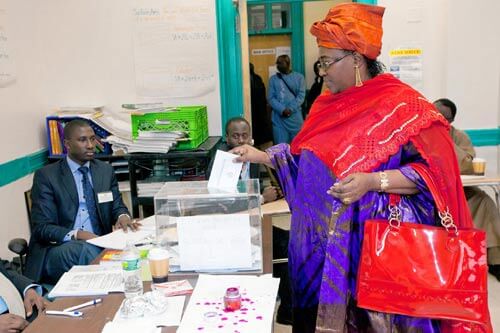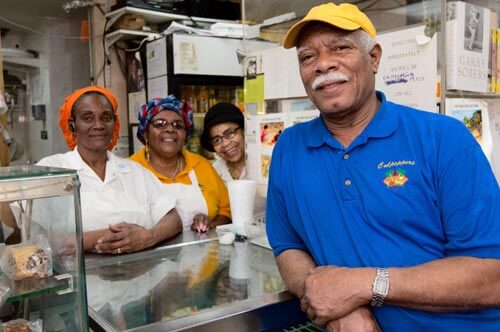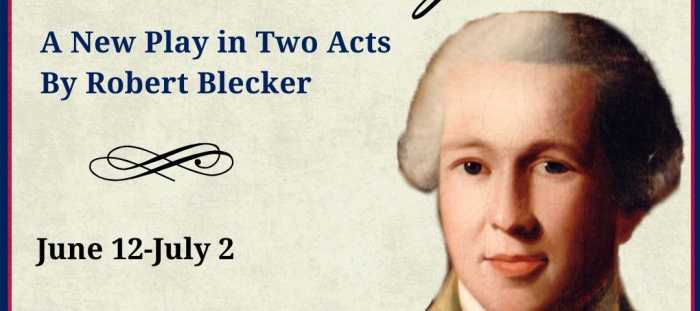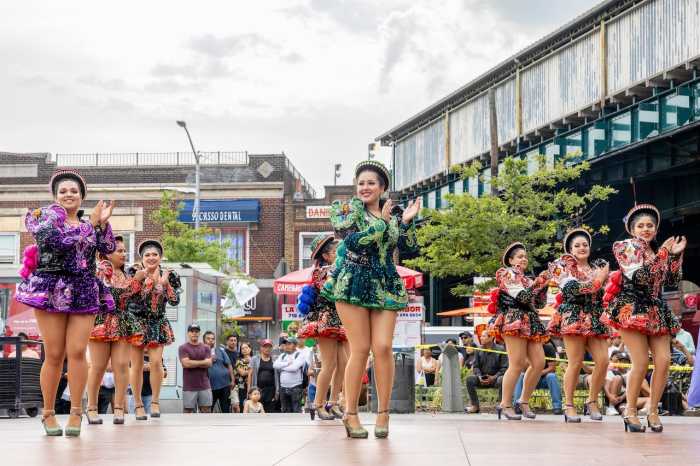What happens when artists from remote regions interact with their urban peers, and the traditional and contemporary meet in creative minds? Or when artists revisit traditions familiar but misunderstood, such as vodoun, hula, belly dancing and gypsy music?
On Jan. 9, 13 groups from a spectrum of musical traditions converge in Manhattan’s Webster Hall’s three venues. GlobalFEST, presents an extraordinary frame grab into the possibilities and defines, for the moment, the ever changing term “world music.” It is an interactive event as audience members create their own experience moving from stage to stage choosing to delve into ancient traditions or contemporary artists breaking new ground.
Highlights include the U.S. debut of the “chamber music” duo Ballaké Sissoko and Vincent Ségal, which co-producer Isabel Soffer calls a “rare example of collaboration that works on a higher level,” the N.Y. solo debut of Hawaiian vocalist Kaumakaiwa Kanaka’ole and the U.S. debut of Senegalese Mbalax star Yoro Ndiaye.
The Caribbean will be represented by several groups, The Creole Choir of Cuba, RAM, Pedrito Martinez Group, and La-33.
Diblo Dibala, Red Baraat, Zikrayet, Rhythm of Rajasthan, and Novalima will also perform.
The Creole Choir of Cuba is known for complex vocal harmonies and colorfully costumed dancers moving to the rhythms, mazurkas, merengues once common in the French Caribbean. The traditions survive in isolation, in a Haitian community of laborers in the Cuban sugar cane fields. A community that dates from the 1700’s by escaped slaves and renewed by later waves of migration.
Haitian Mizik Rasin group RAM makes a rare New York appearance. “Vodoun is a spiritual practice that dates from Old Testament days, and there is song, dance and rhythms in it” said Richard Morse, founder of RAM.
“When this band takes the stage and begins to play you start moving instinctively. That is the core of the music and the practice that is the roots of the music, it is something that existed before us, that will exist after us we just happen to be tapping in at this moment.” Success for the 16-piece group is activating those roots, which they do at weekly performances at their home in the Olaffsen Hotel, Port au Prince.
Red Baraat is a New York band in that it is a confluence of musical cultures coming together to play Dhol and brass led by drummer Sunny Jain. Jain said the band came about when he began musically exploring his Punjabi roots and took off from there, and connects to other street music cultures as a reference point. The band is working on its second album and will be showcasing the new music at Barbes in Brooklyn every Thursday in January before going into the studio.
The music of Hawaii is subtle and mysterious, gentle, warm and misunderstood. In Kaumakaiwa Kanaka’ole’s family it is an art handed down from generation to generation in. The 28-year-old vocalist will present his music in duet form at GlobalFEST.
Zikrayet (memories in Arabic) brings together musicians and dancers to celebrate the golden age of Arabic music and dance featuring in this show “a glimpse of the musicianship and glamour of mid-century of Egyptian cinema. They pay close attention to Raqs Sharqi or “belly dance” and its exaggerated stereotypical portrayals in the west.
Diblo Dibala plays Soukous or modern Congolese rhumba music. Even if you have never seen him you probably have heard his distinctive guitar as he has appeared on more than 60 albums.
Pedrito Martinez is a percussionist and singer, the Cuban native living in New York since arriving in the U.S. in 1998. Although he has collaborated with many artists, his best known project was Yerba Buena. In the Pedrito Martinez project his partners included pianist Axel Tosca, Ron Blake on sax, Roman Diaz, bata; Panagioutis Andreou, bass; and Mauricio Herrera, drums.
Groups from Brazil, Columbia and Peru will be making their second tours of the states.
La-33 takes its name from an address in Bogota where musicians meet. Known as one of Columbia’s greatest salsa bands, their passion is for the salsa brava era influenced arrangements of Cuban rhythms, Boogaloo, Mambo, Son Montuno, Guaguanco, Timba, Guajira, with urban styles, funk and jazz.
Novalima pulsating hip shaking electronica remains true to its Afro Peruvian roots, and with the new album in the works they are “deepening their trajectory delving into the Afro Peruvian by working with old masters from the tradition in a Lima recording studio.
Orquestra Con-temporanéa de Olinda is a collaborative of musicians from the Manque beat movement of Pernambuco, Brazil. Mangue Beat is an movement founded in Recife, Brazil in the 1990’s with a punk sensibility that fused the local rhythms of Pernambuco to modern concepts and continues to evolve.
From the ancestral home of the Roma gypsies, the desert bordering India and Pakistan come the Rhythm of Rajasthan. Rhythm of Rajasthan, is a collaborative that performs the folk music and dance of the region and has included more than 100 artists over its nine-year existence. As a crossroads, the music and dance is influenced by Islamic and Hindu traditions.
























